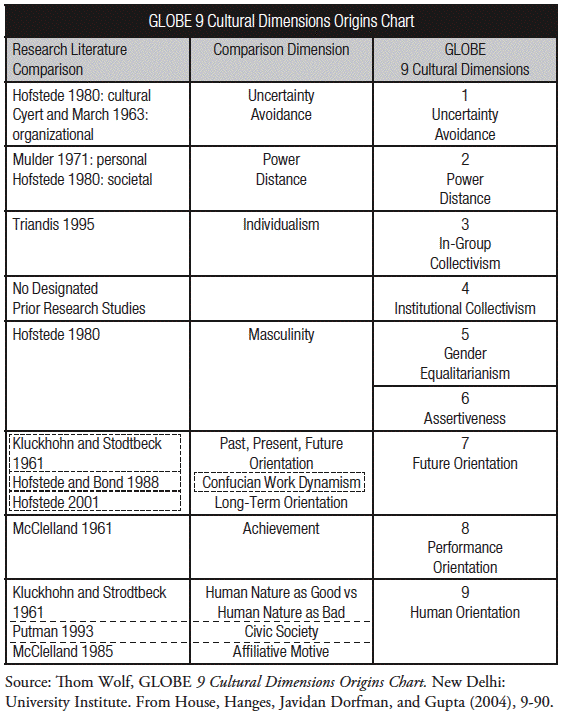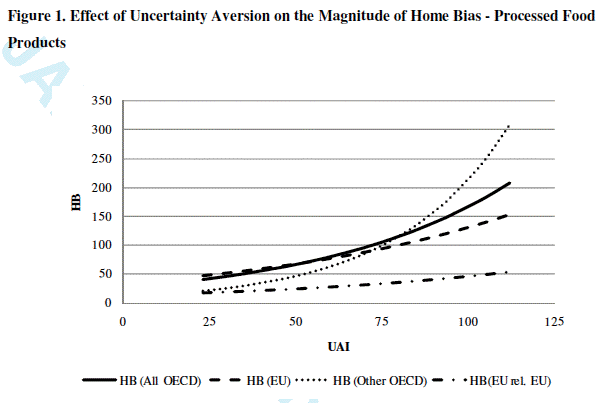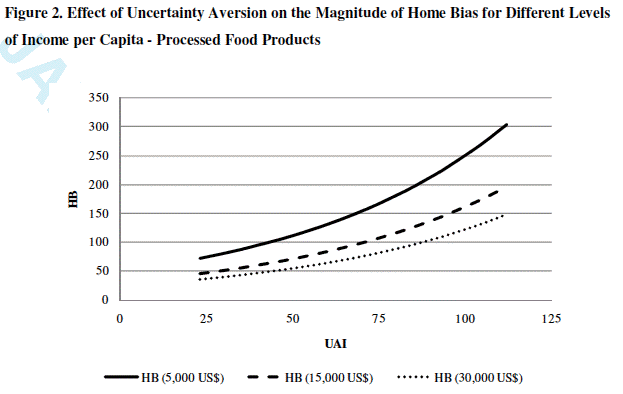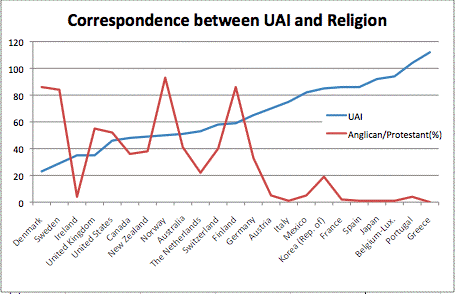MKT3000: Culture Matters
Guest Lecture:
See Dr. Joan Harvey's lecture
slides
Supplementary Notes:
Cultures' meanings? For
the those with an intellectual curiosity, you could do far worse than
listen to the five-day (part) (45mins./part) BBC Radio 4 series The Value of Culture
(hosted by Melvyn Bragg), 31/12/12 - 04/01/13: which explores the
development/evolution of the word from Mathew Arnold (1867 - Culture
& Anarchy: the fudamental importance of aspirations to the
great, good and best as the moral and ethical foundations of society),
through E. B. Tylor's anthropoligical meanings (Primitive Cutlure,
1861, = civilisation, what separates humans from other animals
(knowledge, understanding & beliefs), and extended by Boas and Mead- to the 'two cultures (science vs. arts/humanities) debate' (C. P. Snow, 1959, versus F. R Leavis) and more modern intrerpretations and attributions.
[Grayling notes, mid-way through the final debate in this series, that
J.M. Keynes said (at the formation of the Arts Council in Britain in
1945): "We all know about the 5 giants of physical poverty: want;
disease; ignorance; squalor and idleness. But what about poverty of aspiration - the value of excellent/high culture which broadens horizons?"
The etymology
of the word and history of its use illustrates the multifacted nature
of its meanings and significance: 'one of the two or three the most
complicated words in the English language', from the anthropological
meanings, through literary and artistic criticism, to modern and even
post-modern popular, mass, corporate, benefit, dependency, vulture and
shock. Is any 'culture' actually recognisable, observable, definable,
meaningful?
See, for collections of global surveys
of values and cultural changes in societies all over the world, World Values
Survey, and a 'current' map of different values. See, also, their take on happiness and social values:
"Regression analyses suggest that that the extent to which a society
allows free choice has a major impact on happiness. Since 1981,
economic development, democratization, and increasing social tolerance
have increased the extent to which people perceive that they have free
choice, which in turn has led to higher levels of happiness around the
world, as the human development model suggests."
Geert
Hofstede's Page, including five factor scores for all major
countries, and comparisons.
Economist's brief
notes.
The Economist, 30.09.2010: "The
debate over universal values - It
is not quite true that China is
rejecting Western values such as democracy. Rather, it is fighting over
them"
[A
counterpoint: From TED: Maajid Nawaz: "A
global culture to fight extremism" (a reformed Islamist extremist)
- need to combat: complacency; political correctness; relegation of
democratic choice to choice of political parties; ideology of
resistance (lack of communism as the common enemy)]
A potentially useful over-view of the Hofstede measures of culture:
Kirkman, B. L., Gibson, C. B. and Lowe, K. B.
(2006). ‘A quarter century of
culture’s consequences: a review of empirical research incorporating
Hofstede’s cultural values framework’,
Journal
of International Business Studies, 37, pp. 285–320.
For a critque of the Hofstede dimensions, see Brendan McSweeney, Human Relations, 2002; 55; 89
And: Vas
Taras, Piers Steel and Bradley L Kirkman (2010): "Commentary: Negative practice–value
correlations in the GLOBE data: Unexpected findings, questionnaire
limitations and research directions", Journal of
International Business Studies, 41, 1330–1338;
doi:10.1057/jibs.2010.30:
Abstract: "The study of culture and cultural values continues to be
hotly debated among cross-cultural researchers worldwide. Starting with
the seminal work of Kluckhohn and Strodtbeck, and Hofstede, and
continuing with more recent efforts, researchers have continued to
develop and empirically examine cultural value frameworks in an attempt
to understand how cultural differences affect work-related behaviors
and attitudes. The purpose of this commentary is to briefly describe
the interesting – and counterintuitive – findings from the Global
Leadership and Organizational Behavior Effectiveness (GLOBE) project,
summarize the different interpretations of these findings offered by
Maseland and van Hoorn, and by Brewer and Venaik, provide a critique of
their arguments, and finally offer a list of possible alternative
interpretations and explanations for the conflicting findings in the
GLOBE study."
For an
abbreviated reveiw of the GLOBE project, see:
Thom Wolf: Book Review of: Culture, Leadership and
Organisations: The GLOBE study of 62 societies, House, R.J.,
Hanges, P.J., Javidan, M., Dorfman, P.W., & Gupta, V. (eds.).
(2004). Thousand Oaks: Sage Publications. 818 pages. in The Journal of Applied Christian
Leadership, Summer, 2006, p 55 -71., who reproduces the
following summary of the GLOBE project's cultural dimensions of
leadership:

Also, by a similar set of authors: Taras,
Vas; Kirkman, Bradley L.; Steel, Piers (2010): "Examining the impact of Culture's
consequences: A three-decade, multilevel, meta-analytic review of
Hofstede's cultural value dimensions." Journal of
Applied Psychology, Vol 95(3), 405-439 (to which the Robinson
Library has no current subscription). The abstract reads as follows:
"Using data from 598 studies representing over 200,000 individuals, we
meta-analyzed the relationship between G. Hofstede's (1980a) original 4
cultural value dimensions and a variety of organizationally relevant
outcomes.
First, values predict outcomes with similar strength (with an overall
absolute weighted effect size of ρ = 0.18) at the individual level of
analysis.
Second, the predictive power of the cultural values was significantly
lower than that of personality traits and demographics for certain
outcomes (e.g., job performance, absenteeism, turnover) but was
significantly higher for others (e.g., organizational commitment,
identification, citizenship behavior, team-related attitudes, feedback
seeking).
Third, cultural values were most strongly related to emotions, followed
by attitudes, then behaviors, and finally job performance.
Fourth, cultural values were more strongly related to outcomes for
managers (rather than students) and for older, male, and more educated
respondents.
Fifth, findings were stronger for primary, rather than secondary, data.
Finally, we provide support for M. Gelfand, L. H. Nishii, and J. L.
Raver's (2006) conceptualization of societal tightness–looseness,
finding significantly stronger effects in culturally tighter, rather
than looser, countries."
For a lighter-hearted (?) take on culture - consider beliefs in heaven and hell versus crime rate differentials between countries.
Meanwhile, two recent papers explore the
apparent effects of culture (Hofstede's factors) on economic
performance:
1. Does culture affect trade flows?
Ghazalian, 2012, explores this
question, at least with respect to one aspect of the Hofstede factors: Uncertainty avoidance
(UAI).
"The UAI dataset is sourced from Hofstede (1980, 2001) who implemented
an international survey over 88,000 local employees working in
marketing and customer services of IBM subsidiaries in more than 50
different countries. Uncertainty aversion is defined as the extent of
“feeling uncomfortable with uncertainty and ambiguity, and valuing
beliefs and institutions that
provide certainty and conformity." Hofstede (1980, 2001) constructed a
unique UAI (Uncertainty Aversion Indicator) dataset that reflects
mean national attitudes to uncertainty. Hofstede (1980, 2001) generated
the UAI dataset primarily
using the responses of employees to three
main factors. The first factor
is rule orientation which is depicted through the extent of
agreement with the statement “company rules should not be broken even
when the employee thinks it is in the company’s best interest”. A
stronger disagreement with this statement is explained to reflect
higher levels of tolerance to uncertainty. The second factor is employment stability
which is depicted through employee’s intention to continue with the
company for more than a specified number of years. A higher valuation
of employment stability is described to reveal lower levels of
tolerance toward uncertainty. The third
factor is stress which is expressed through the response to the
question “how often do you feel nervous or tense at work”. Higher
levels of stress reveal lower levels of tolerance to uncertainty.
Hofstede (1980, 2001) used average values to develop country-specific
indicators" (p 9/10) ...
The basis of this analysis is the gravity
model of trade:
Trade between countries (regions) depends
on: Distance between trading partners; Existence of trade agreements between them; sharing a common language; Contiguous borders or not; GDP/hd (since richer countries have
better infrastructure, higher consumption levels and generally are more
likely to import than poorer countries); Foreign Direct Investment (FDI) which might predispose
countries towards imports from the foreign parent investor. The
degree of home bias (production
minus exports) for any given commodity/product class is measured
relative to imports of the same good from elsewhere, as 'explained' by
these determining factors, and indicates the extent to which trade
reflects a preference for home produced goods and services in favour of
those from abroad, having corrected (controlled) for the other major
determinants of trade flows.
Ghazalian also includes the UAI measure for the importing country as a
factor, and hence measures the seperate influence of this score on
trade flows for both primary and processed food trade between OECD
countries over the period 1988 - 2005.
He concludes: "This study empirically underscores the significant effects of the national uncertainty aversion
attribute in determining the
magnitude of home bias in differentiated processed food trade"
(p24), which has not changed over this time period (1988 - 2005).
However, no such UAI induced home bias is detected for primary
commodities - which are typically heavily processed before being sold
to final consumers, and thus 'disguised' as to origin at the retail
level.
 The
apparent effect of UAI scores on the propensity to favour home versus
imported food products is much stronger for non EU OECD trade; and
relatively slight for Intra - EU trade (Eu rel.EU)
The
apparent effect of UAI scores on the propensity to favour home versus
imported food products is much stronger for non EU OECD trade; and
relatively slight for Intra - EU trade (Eu rel.EU)
 The
effect of UAI scores appears to decrease as countries become richer -
the effects of culture on trade patterns diminshing with increased
incomes (and greater globalisation?).
The
effect of UAI scores appears to decrease as countries become richer -
the effects of culture on trade patterns diminshing with increased
incomes (and greater globalisation?).
For econometric reasons (to overcome/check for endogeneity - i.e. mutual
determination between trade flows and UAI (Trade influences UAI as well
as the other way round)) Ghazalian also uses the rather approximate
relationship between UAI and religious affiliations - to use religious
affiliation as an instrumental
variable (none not expected to be determined by trade flows,
but to be associated with UAI) - he observes the following:

See, also, Economist, Schumpeter
Column, Jan. 28th, 2012: The
Power of Tribes.
2. Does culture (Hofstede)
affect Economic Growth?
Chambers
and Hammer (2010) explore this question, noting that a "lack of research linking culture to growth
within the context of macroeconomic growth models most likely reflects
that issues of culture have been largely ignored by the economics
profession" (p. 1), and that "most
research on the relationship between culture, business and economics
was conducted in the management sciences (for a survey of this
literature, see Kirkman et al., 2006)." (p. 2)
Abstract: "Using
Hofstede’s cultural data set, this paper examines the impact of
cultural characteristics on a nation’s economic performance. Using a
two-step estimation procedure, we first estimate a panel growth
regression and obtain estimates of each nation’s fixed effects, which
reflect idiosyncratic differences in growth performance. In the second
step, we regress the fixed effects on invariant cultural and
institutional variables. Our estimation results suggest that
individuality and tolerance for uncertainty are the most important
cultural factors in explaining nation-specific growth performance.
Furthermore, our findings suggest that political and property rights
play a major role in determining idiosyncratic growth."
Selected quotes:
"The goal of this paper is to
examine the impact of culture (broadly defined and measured) on overall
economic performance within the context of a mainstream macroeconomic
growth model. Specifically, we derive the fixed effects from a panel
based on Barro’s (1991) neoclassical growth model. This achieves two
goals: first, the regressors in the panel model allow us to control for
the effects of economic fundamentals on the growth process, and second
we are able to extract estimates of the collective impact of all
remaining invariant, nation-specific factors which impact economic
growth (i.e., the fixed effects). With fixed effect estimates in hand,
we perform second-stage regressions in which the fixed effects are
regressed on a list of cultural and institutional regressors. Although
fairly straightforward, we are unaware of any research involving
culture and growth which employs this estimation technique. ... Apart from culture, we also investigate
how political and property rights affect countryspecific rates of
economic growth. Like culture, these institutional variables are
treated as invariant factors. To proxy for political rights, we use
Freedom House’s freedom classification. Property rights are captured by
the contract enforcement measure from the Business Environmental Risk
Intelligence study. ...The
general finding (in the cited literature) is that greater
freedom/rights positively impact economic growth. Similarly, most
empirical studies find that greater property rights are associated with
higher rates of economic growth. ... Overall, our estimation results reveal that
masculinity and power distance are statistically insignificant
predictors of growth, while individualism
and uncertainty avoidance are significant. We find that greater political rights and greater
property rights are robust in promoting growth. These findings,
which are discussed in more detail in Section III, also suggest that culture may indirectly affect economic
growth by influencing a nation’s judicial system." (p.
2/3)
"Because cultural changes typically
progress at a glacial pace, the fixed effects should capture variation
in growth rates across nations due to differences in a slew of
invariant factors, including culture. Next, these fixed effects are
regressed on a set of invariant factors (including culture), to
determine the effect (if any) of culture on growth." (p 3.)
The 'Model': (p 4)
"To implement this estimation procedure, we begin by obtaining
estimates of the fixed effects from the commonly used 5-year growth
model based on Barro (1991):
growthi t+1
= β1incomeit + β2educationit +
β3govit + β4invit
+β5tradeit + αi + ηt + εi
t+1 (1)
where the dependent variable (growth
(it+1)) measures the average annual growth in real GDP per
capita of country i over the next 5-year period (t + 1).
To account for convergence, our model includes income (it) , which is the natural
log of PPP-adjusted, chain-weighted per-capita GDP in period t.
Human capital is controlled by way of the proxy education (it) , which equals the
average years of secondary and higher education for the male population
aged 15 and above.
Differences in fiscal policies
are captured by gov (it) ,
which measures public expenditures relative to GDP (i.e., Git/Yit).
The rate of capital formation
is controlled for by way of the investment share of output (i.e.,
Iit/Yit), denoted as inv (it) .
The potential impact of gains from
trade are captured using the openness measure, denoted by trade
(it) , which is the ratio of total trade activity to GDP, i.e., (IMit +
EXit)/Yit.
Finally, αi is a country-specific
effect, ηt is a period-specific effect and ε(it+1) is a
stochastic shock with zero mean and constant variance (σ2 ε ) that
captures growth over the
next 5-year period (t + 1) not otherwise determined by the model’s
regressors in period t.
After obtaining estimates of the country-specific effects ( ˆαi ), we
estimate the following
second-stage
regression
model: ˆαi = Wi B + �iG + ui (2)
where Wi is a (1 × 2)
row vector of nation-specific control variables including measures of human rights and personal property rights,
�i is a (1 × 4) row
vector of Hofstede’s culture scores,
i.e., power distance (PDIi), individualism (IDVi), masculinity (MASi)
and uncertainty avoidance (UAIi),
and ui is a mean zero i.i.d. shock.
This approach is particularly attractive because it allows us to use a
relatively large panel of 93 nations in the first stage regression,
despite the fact that we only have corresponding culture data for 41 of
these countries. The larger first stage panel thereby improves the
precision of the common slope coefficients in model (1), allowing us to
more precisely estimate the nation-specific fixed effects used in model
(2). Furthermore, on a more heuristic level, the ability to examine
idiosyncratic differences in growth rates gives one a clearer picture
of actual performance differences across nations."
Data: (p 5)
"Our primary data set (used to estimate model (1)) consists of an
unbalanced panel of 93 countries, with growth covering the period
1961–2001, yielding a total of 794 observations"
Results (p 8ff)
"Starting with income, the estimated coefficient is negative and
statistically significant at the 1 percent level, which is consistent
with convergence (i.e., growth rates decline with economic
development). The coefficients on education, investment and trade
(openness) possess the proper signs and are statistically significant.
They suggest that higher rates of education (and hence greater human
capital), greater levels of capital formation and greater international
flows of goods and services all contribute to higher rates of economic
growth. The sign of the coefficient on government expenditures is
inconsistent with economic theory, but is statistically insignificant."
"Nations with historically low levels of economic growth and
development possess the lowest fixed effects (i.e., idiosyncratic growth).
Specifically, sub-Saharan African nations like the Democratic Republic
of the Congo and Liberia perform exceptionally poorly, while war-torn
nations outside the region (e.g., Afghanistan) fare little better.
Highly developed nations (e.g., the members of the OECD) are the best
performers."
"Clearly, there is a strong correlation between the fixed effects
(which capture idiosyncratic growth not otherwise explained by economic
fundamentals) and Hofstede’s individuality and power distance measures
of culture, as well as human and property rights. The remaining
measures of culture (i.e., masculinity and uncertainty avoidance) are
not strongly correlated with the fixed effects. Moreover, masculinity
is not strongly correlated with any of the other regressors, casting
strong doubt on its importance in either explaining economic growth or
shaping institutional measures like human and property rights.
Uncertainty avoidance, while weakly correlated with the fixed effects,
is somewhat correlated with contract enforcement."
Conclusions: (p 14):
"Using Hofstede’s
(1980) cultural variables and a convenient two-stage estimation
procedure, we find that cultural variables and measures of political
and human rights explain just over 80 percent of nations’ idiosyncratic
economic growth not otherwise explained by economic fundamentals.
Overall, individuality and uncertainty avoidance appear to be growth
promoting, while political freedom and the presence of an honest
judiciary that enforces contracts also promotes growth. Hofstede’s
masculinity variable appears to have no effect on growth. Both
uncertainty avoidance and power distance (a proxy for trust) appear to
interact with contract enforcement, suggesting that culture indirectly
affects growth vis-`a-vis a nation’s political and legal institutions.
Presumably, this broad finding is consistent with the beliefs of many
economists and social scientists, and suggests that future research
should focus on the direct connections and transmission mechanisms
between culture and political institutions, to determine how culture
affects these institutions (and vice versa).
Friedman (2007, p. 420) accurately summed up the importance of this
topic when he recently wrote: ‘To reduce a country’s
economic performance to culture alone is ridiculous, but to analyse a
country’s economic performance without reference to culture is equally
ridiculous, although that is what many economists and political
scientists want to do’."
Back
to MKT3000 Index.
Comments or Questions?

 The
apparent effect of UAI scores on the propensity to favour home versus
imported food products is much stronger for non EU OECD trade; and
relatively slight for Intra - EU trade (Eu rel.EU)
The
apparent effect of UAI scores on the propensity to favour home versus
imported food products is much stronger for non EU OECD trade; and
relatively slight for Intra - EU trade (Eu rel.EU) The
effect of UAI scores appears to decrease as countries become richer -
the effects of culture on trade patterns diminshing with increased
incomes (and greater globalisation?).
The
effect of UAI scores appears to decrease as countries become richer -
the effects of culture on trade patterns diminshing with increased
incomes (and greater globalisation?).